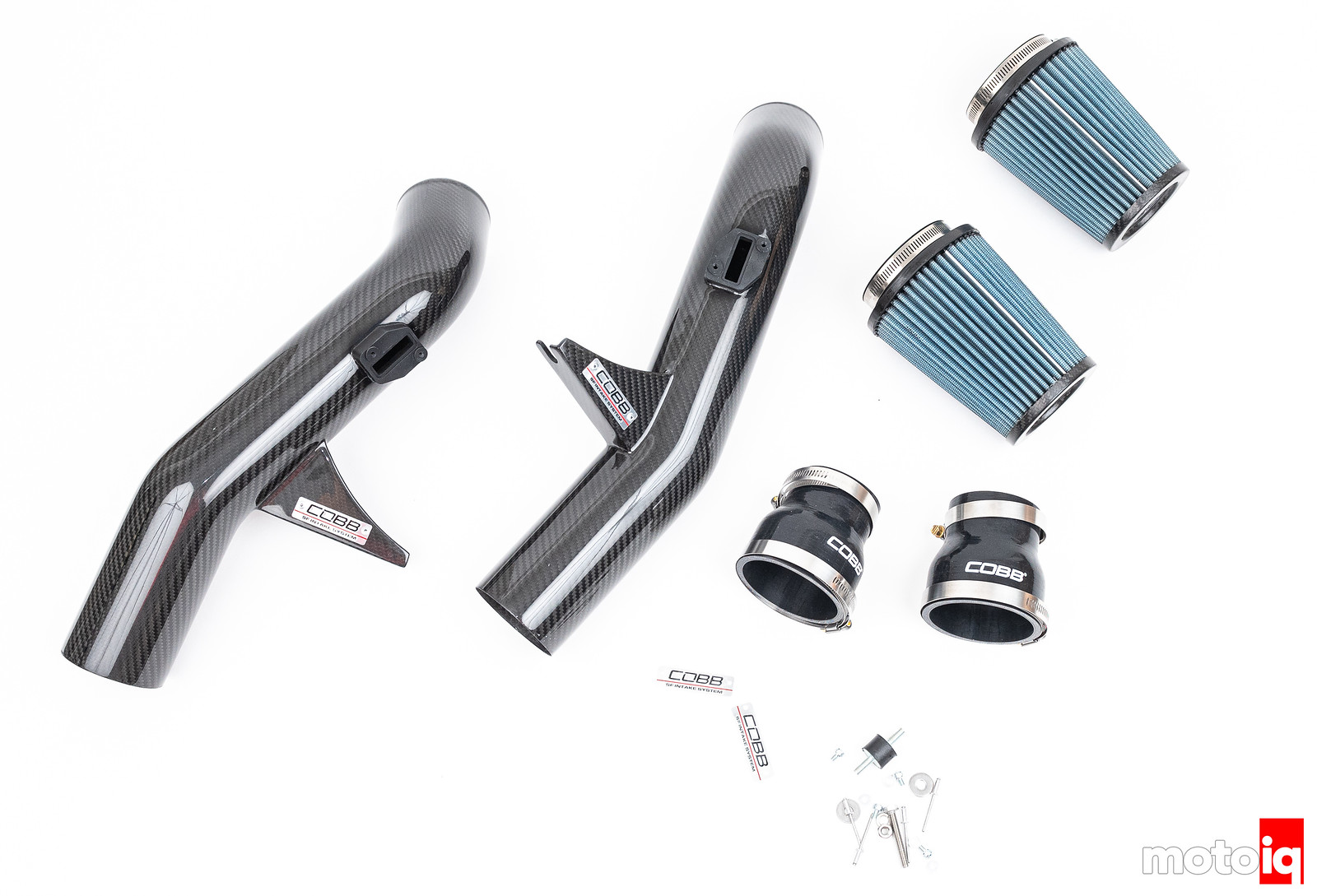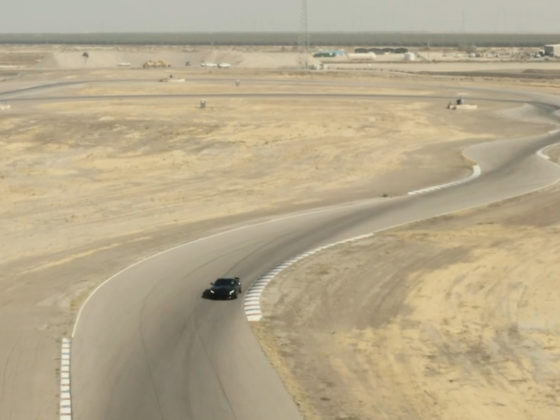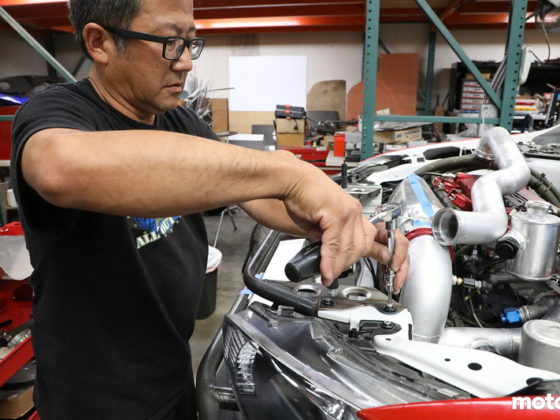
The catch cans are then hung on the bracket.

To keep as much oil out of the intake as possible, we also used Radiums PCV air oil separator. The Radium system is a closed loop system not allowing any gasses to escape to the atmosphere. Closed loop systems remove the oil and sludge from the PCV gasses before it is routed to the engine to be burned. A closed loop system also promotes negative crankcase pressure for optimal performance. Furthermore, closed systems prevent unwanted oil vapors from entering the engine compartment. The dipsticks built into the catch cans allow easy inspection of accumulated fluid. No cutting, drilling or permanent modifications are required.

This hose is from the PCV valve and is routed from the valve cover to the intake manifold. We are going to re-route the PVC vent, send it to the catch can to be filtered then send it to the manifold.

The valvecover vents send crankcase gases to the turbo inlet tubes so we are just going to intercept them and direct them to our air oil separator catch cans.

Blowby gasses go from the valve cover vents, to the catch cans to be cleaned, then to the turbo inlets. Our catch cans have the optional drain. The drains off all the catch cans are all brought together and terminate in a drain valve under the car right at the oil filter access hatch in the belly pan. We can now easily empty all the catch cans together from one point under the car if the cans dipsticks indicate that the catch cans are filling up.



